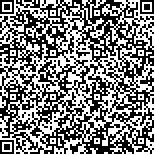| 刘涛,黄媛,蒋燕妮,李轲,高贵.以认知神经科学为导向的课堂教学环境构建机理与实践分析[J].军事高等教育研究,2024,47(1):103-108 |

二维码(码上扫一扫!)
|
| 以认知神经科学为导向的课堂教学环境构建机理与实践分析 |
| Construction Mechanism and Practice of Cognitive Neuroscience-Oriented Classroom Teaching Environment |
| |
| DOI: |
| 中文关键词: 认知神经 神经递质 多巴胺 雷达系统 自学能力 环境 |
| Key Words:cognitive nerve neurotransmitter dopamine radar system self-study ability environment |
| 基金项目:海军工程大学教学成果立项培育项目(NUE2022TA10);海军工程大学教育科研课题(NUE2024ER06) |
|
| 摘要点击次数: 2831 |
| 全文下载次数: 2933 |
| 中文摘要: |
| 针对雷达系统课程内容多、难度大等问题,从认知神经科学理论出发,阐述了神经递质与深度学习之间的关系,揭示了课堂教学本质并给出了神经学解释,提出了以诱导神经递质分泌为牵引、以人脑协同认知为目标的课堂教学环境构建方案,体现了“学为中心”的教育理念。教学环境由日常舒适环境、教室舒适环境、内容舒适环境、好奇挑战环境和自主舒适环境五部分构成。课堂教学环境的构建使得课程从舒适区边缘展开突破,符合脑科学机理,培养了学员以“新旧知识关系建立”为核心的自主学习能力。 |
| Abstract: |
| In view of the problems of too much content and high degree of difficulty in the course of Radar System,this paper,based on the theory of cognitive neuroscience,eleborates the relationship between neurotransmitters and deep learning,highlights the essence of classroom teaching,offers the neurological explanation,and proposes a classroom teaching environment construction scheme guided by inducing neurotransmitter secretion and aiming at human brain collaborative cognition,reflecting the educational concept of“learning as the center”. The teaching environment consists of five parts:daily comfort environment,classroom comfort environment,content comfort environment,fun challenge environment and autonomous comfort environment. The construction of the classroom teaching environment enables the course break through from the edge of the comfort zone,conforms to the mechanism of brain science,and cultivates the students’autonomous learning ability with the core of“establishing the relationship between old and new knowledge”. |
| 查看全文 查看/发表评论 下载PDF阅读器 |

